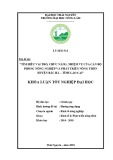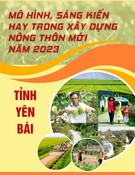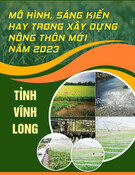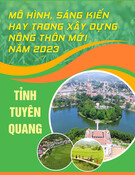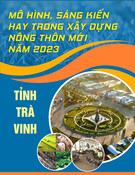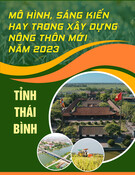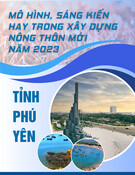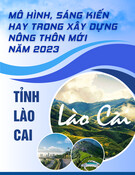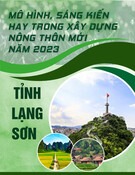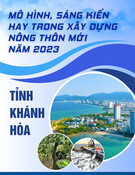
Int.J.Curr.Microbiol.App.Sci (2020) 9(11): 1595-1599
1595
Case Study https://doi.org/10.20546/ijcmas.2020.911.189
Business Performance of Vandana Self Help Group (SHG): A Case Study of
Koriya District of Chhattisgarh
Shweta Singh* and A. K. Gouraha
Department of Agricultural Economics, Agricultural Economics, Indira Gandhi Krishi
Vishwavidyalaya, Raipur, C.G., India
*Corresponding author
A B S T R A C T
Introduction
Self Help Group (SHG) is a small association
of people, ideal from the same socio-
economic background. Its approach is a new
pattern in the field of rural developments
whose main objective is to raise the well-
being of the people and to develop collective
decision-making among members &motivate
members to taking part in social duties
particularly related to development. It is
initiated as a self-employment program.
Self Help group is a village-based financial
mediator community of not more than 10-20
people. It helps people who do not have
access to form financial structure. SHGs
works as an assembly to provide support and
space.
The study attempt to understand business
performance, in turn, helps to review the
market sustainability of the women SHGs and
enhancing the business performance with
suitable Marketing Strategies for profitability
International Journal of Current Microbiology and Applied Sciences
ISSN: 2319-7706 Volume 9 Number 11 (2020)
Journal homepage: http://www.ijcmas.com
The present study was focused to investigate the “business performance of vandana Self
Help Group (SHG): a case study of Koriya district of Chhattisgarh state of India”.Vandana
self-help group was purposely selected for the present study which is situated in the Koriya
district of Chhattisgarh state. Vandana self-help group produces vermicompost and they
were using a constructed method for vermicompost production. Primary data was collected
from the Vandana self-help group by a personal interview with the help of interview
schedules. The primary data were classified and tabulated in the light of given objectives
and analyzed as per the appropriate economics tools. This study revealed that per bed
production of vermicompost was 40qt. because in the constructed method vermicompost is
produced in 4 cycles. Net income on the total cost was Rs.15816. The benefit-cost ratio of
per bed was (1:0.6). The total cost of vermicompost production per bed was Rs.24184. The
total production of vermicompost by Vandana SHG was 3680qt. because of 92 beds in
their constructed unit. Net income on the total cost was Rs.1455072. The benefit-cost ratio
was (1.0.6). The Total cost of vermicompost production for 92 beds per year was
Rs.2224928 in the constructed method.
K e y w o r d s
Net income,
Benefit-cost ratio,
Total cost
Accepted:
12 October 2020
Available Online:
10 November 2020
Article Info

Int.J.Curr.Microbiol.App.Sci (2020) 9(11): 1595-1599
1596
that may be important to make the
organization and effective institution
arrangement of the women leading to the
development of rural India.
Vandana self-help group was selected to
fulfill the objective-
To work out the business performance of
Vandana self- help group.
Materials and Methods
The Koriya district was purposively selected
for the present study, from where the primary
data were collected by interviewing the
members of “Vandana SHGs” for the present
investigation. Primary data were collected
from the Vandana SHGs through a personal
interview with the help of pre-tested well-
prepared interview schedules covering
various aspects to answer the objectives of
this study. The primary data recorded
regarding farm assets, fixed and variable cost
of vermicompost production, operation wise
labor utilization, total quantity sold, price of
vermicompost, agency to whom sold, place of
sell, and expenditure incurred during the
marketing of produce, etc.
Analysis of data
Cost of cultivation = Total Fixed cost + Total
Variable cost
Gross Income = Physical Production ×
Price/qt.
Net Income = Gross Income ˗ Total Cost
Input-Output Ratio = Gross Income / Total
Cost
Benefit – Cost Ratio = Net Income/ Total
Cost
Results and Discussion
Item wise expenditure of vermicompost
production for the constructed method was
calculated and is presented in Table 1. The
variable cost is the cost that changes as the
quantity of the goods or services that a
business produces changes. The total variable
cost of Vandana self- help group is Rs.728 for
1 quintal and Rs.5746 for 1 bed in one period.
The total fixed cost includes the expenses that
do not change as a function of the activity of a
business, within the relevant period of time.
The fixed cost of the Vandana self-help group
is Rs.30 for 1 quintal and Rs.300 for 1 bed in
one period.
The gross income is the amount that a
business earns from the sale of goods or
services, before selling, administrative tax,
and other expenses have been deducted. The
gross income is Rs.1000 for 1 quintal and
Rs.10000 for 1 bed. The input-output ratio of
Vandana self-help group is 1:1.6 for 1 quintal
and 1:1.6 for 1 bed.
The net income is the amount remaining after
subtracting all costs and expenses from
revenue. The net income of the Vandana self-
help group is Rs.242 for 1 quintal and
Rs.3954 for 1 bed in one period. The net cost-
benefit Ratio for 1 quintal is 1:0.6 and for 1
bed is 1:0.6 (Fig. 1).
Output and returns
Total Cost, production, gross income, and net
income was calculated in table 2. It was
observed that the production of vermicompost
in a year of 1 bed was 40q and for 92 beds
yearly production was observed 3680q in the
constructed method.

Int.J.Curr.Microbiol.App.Sci (2020) 9(11): 1595-1599
1597
Table.1 Business performance of Vandana Self-help group
Particulars
Unit(Rs./q)
Physical unit per
bed material(q)
Cost of 1 bed (Rs.)
Size of bed (10×4×2 feet)
Variable cost
Cow Dung @ Rs.0.88
88
9
792
Crop Wastage @ Rs.1.26
126.5
6
759.96
Electricity & Water Charges
2
10
20
Earthworm cost @ Rs.157/kg
157/kg
4 kg
628
Labor charges
225
10
2250
Marketing & packaging cost
105
10
1050
Miscellaneous Cost
25
10
250
Total Variable Cost(A)
728
5746
Fixed Cost
The rental value of the constructed
unit for 3 months 300
30
10
300
Total Fixed Cost (B)
30
10
300
Total Cost (A+B)
758
6046
Gross Income
1000
10000
Input-Output Ratio
1:1.6
1:1.6
Net Income
242
3954
C:B Ratio
1:0.6
1:0.6
Table.2 Production, total cost, gross income and net income for the constructed method of
vermicompost production. (Rs./Year)
S.no.
Particulars
Cost and production of 1
bed. (In whole year 4
times)
Size of bed (40×4×2feet)
Cost and production of
92 beds.
1
Total cost
24184
2224928
2
Production
40
3680
3
Gross income
40000
3680000
4
Input-Output Ratio
1:1.6
1:1.6
5
Net income
15816
1455072
6
C: B Ratio
1:0.6
1:0.6

Int.J.Curr.Microbiol.App.Sci (2020) 9(11): 1595-1599
1598
Fig.1 Total cost and net income of constructed method of vermicompost production per quintal
and bed
The total cost of vermicompost production
was calculated in the constructed method was
Rs.24184 for 1 bed and it was calculated that
the yearly total cost for 92 beds was
Rs.2224928.
Total gross return earned by Vandana self-
help group was Rs.40000 from 1 bed and
yearly total gross return from 92 beds by
Vandana SHG was Rs.3680000 in the
constructed method.
Net income on the total cost for 1 bed was
Rs.15816 and yearly net income for 92 beds
was Rs.1455072 in the constructed method.
In conclusion it was calculated that the total
cost of vermicompost by Vandana SHG was
Rs.758/qt. Rs.24184 per bed and Rs.2224928
for 92 beds for the production of
vermicompost in the constructed method. The
net income of vermicompost production was
Rs.3954/qt. Rs.15816 per bed and
Rs.1455072 per year on total cost in
constructed method. The benefit-cost ratio
was (1:0.6) in the constructed method. It is
concluded that vermicompost distribution
through the producer to retailer to consumer
channel is more used by the Vandana self-
help group than other channels of distribution.
Attack of ants to the vermicompost, low price
for vermicompost, lack of market information
was some of the major constraints faced by
the Vandana self-help group.
References
Amita Rani and Pawan Kumar Dhiman.
Dimensions And Apprehensions of
Self-Help Groups-An Analysis.
International Journal of Economics and
Business modeling. 3.2 (2012):172-176
Chauhan HK, Singh K (2015) Potency of
Vermiwash with Neem plant parts on
the Infestation of Eariasvittella
(Fabricius) and Productivity of Okra
(Abelmoschus esculentus) (L.) Moench.
Asian J Res Pharm Sci 5(1):36–40.
Chatterjee, S., and Apartment, M. (2014).
Self-help groups and economic
empowerment of rural women: A case
study. International Journal of
Education and Management Studies,
4(2), 103.
Das. R., NARMAN. R.N. and BARUAH.
P.K. 2001. Performance of Self-Help
Groups in Sonitpur District of Assam.
India Journal of Agricultural
Economics. 56(3), 466.
Domínguez JJ, Edwards CA (2011) Biology
and ecology of earthworms species
used for vermicomposting. In: Edwards
CA, Arancon NQ, Sherman RL (eds)
Vermiculture technology: earthworms,
organic waste and environmental
management. CRC Press, Boca Raton,
pp 27–40
Ganapathi, R., and S. Anbu Malar. “Customer
satisfaction of MEPZ- special

Int.J.Curr.Microbiol.App.Sci (2020) 9(11): 1595-1599
1599
economic zone.” Asia-Pacific Business
Review, vol. 4, no.1, 2008
Gandhi, M., Sangwan, V., Kapoor, K.K. and
Dilbaghi, N. (1997) Composting of
household wastes with and without
earthworms. Environment and Ecology,
15, 432-434.
Padal , S.R.(2011) Effect of Self Help Groups
in economic empowerment of rural
women in Andhrapradesh. Journal of
Research in Peace, Gender and
Development 2011 Vol.1 No.3 pp.101-
110 ref. 10
Ramanujam, V. and Homiga, U. (2014). A
study on the performance of Self Help
Groups in Mysore District,
International Journal of Business and
Administration
Reddy BV, Honnaiah C, Reddy PNS, Kale
RD, Balakrishna AN (2009).
"Economics of vermicompost
production and marketing in Southern
Karnataka", Mysore J. Agric. Sci., Vol.
43, No. 1, pp. 125-131.
Shivakumara C (2008). "Production and
marketing of vermicompost in
Karnataka: A case of Dharwad
district", unpublished M.Sc. Thesis.
University of Agricultural Sciences,
Dharwad, Karnataka, India.
How to cite this article:
Shweta Singh and Gouraha, A. K. 2020. Business Performance of Vandana Self Help Group
(SHG): A Case Study of Koriya District of Chhattisgarh. Int.J.Curr.Microbiol.App.Sci. 9(11):
1595-1599. doi: https://doi.org/10.20546/ijcmas.2020.911.189


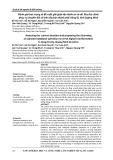
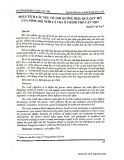
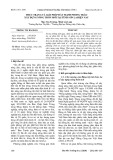

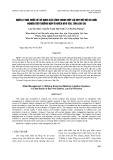
![Giáo trình Đánh giá nông thôn (Nghề Phát triển nông thôn Trung cấp) - Trường Cao đẳng Cộng đồng Đồng Tháp [Mới nhất]](https://cdn.tailieu.vn/images/document/thumbnail/2022/20221012/troinangxanh10/135x160/5011665566145.jpg)

![Giáo trình Kỹ năng giao tiếp Phát triển nông thôn Trung cấp - Trường Cao đẳng Cộng đồng Đồng Tháp [Chuẩn nhất]](https://cdn.tailieu.vn/images/document/thumbnail/2022/20221012/troinangxanh10/135x160/8251665566184.jpg)
